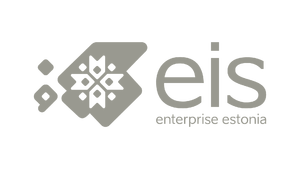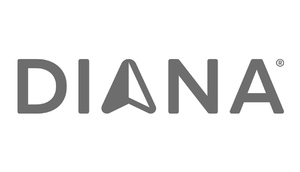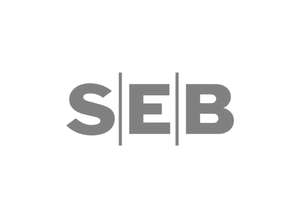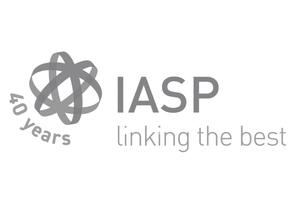01.06.2017
Siim Sikkut: e-Estonia stands strong
According to Siim Sikkut, the Deputy Secretary General for Communications and State Information Systems at the Ministry of Economic Affairs and Communications, the e-health core system should become a two-way exchange platform.
What is the state of e-Estonia today?
e-Estonia stands very strong. Our luck has been than we built up the right and proper digital service infrastructure very early on, starting from nationwide digital ID and the data exchange platform X-Road. These made the digitization of various fields from health to police to taxes to voting much easier, faster, more secure, and cost-effective as well. No country in the world has the core shared service platforms like we do, with the ability to authenticate and sign anything digitally and in a fully secure way, or connect the entire government together to enable the easy exchange of data.
In addition, there are world-class innovative digital services in many fields. Based on digital solutions, our tax system is the most effective in world. It is so easy to start and administer companies as you can do that online. And so on. Having said, there is still more to do, especially as technology jumps forward and opens up new opportunities for digitization. Thus, we have to keep redesigning and approving our digital government all the time.
How has the e-health strategy been implemented?
The “diagnosis” of e-health in Estonia is similar as with rest of e-Estonia. The building blocks we have built up, from digital prescriptions or nationwide electronic health records, are good pillars for further iterations of our e-health services. At the same time, there is definitely more we could and indeed should do to make use of tech to really transform the core of the health system here – opportunities based on new tech have increased in health, perhaps the most of all fields in the last few years. That is exactly why our government approved in December 2015 the new e-health strategy – to catch up with new tech opportunities.
What are the most important developments in the field of health? In what directions are they developing??
The Estonian e-health strategy has five focus areas – basically five directions in which we will kickstart new innovation initiatives and systemic change.
First, personalized medicine – combining different data from national electronic health records to your genome information to offer better prevention and medical care that is fine-tuned to your personal conditions. Second, we will work to integrate health services and stakeholders as well as health and welfare systems better together for holistic case management throughout the whole healthcare chain. Third, we will undertake digital steps to support moving our medicine towards an outcome-based model and comprehensive quality assessments. Fourth, we will start introducing teleservices into the healthcare portfolio and also create the framework for relevant bottom-up innovation by companies.
Fifth – last but not least – to support all of this we will redesign and improve upon how data is captured, stored, and shared as the foundation for all other directions. Basically, we will be redesigning our core e-health information system.
How would ideal e-health information system look like? Do we move towards this direction?
The aim of redesigning our core e-health information system is to enable the world of connected health – to turn our e-health system from central data repository to a data exchange platform. So far, only licensed medical institutions can send data to the health record system (for them it is mandatory). But people already capture themselves so much data through wearables, various private services, then there is also environmental data for context, etc. We want to remake e-health as a platform to enable various third-party services and devices to also enter data into people’s health record if they choose to. This way, health specialists would have much more data to work from for prevention as well as treatment.
We also want to remake the e-health information system to allow for more and better sharing of data beyond just the official health system, like now. If people want and consent, they could share all their health record easier with third-party services providers – be these a diagnostic app or innovative health services or other. These can offer you better service again, if they have more data to use.
Thus, all in all, the vision is clear – the e-health core system should become a two-way exchange platform. By the way, this is more of an organizational redesign than a tech redesign effort. But it will make real on nationwide level the promise of very personal, precise, timely health services.
Which are the general trends in e-Estonia in coming years?
Estonia is working to keep innovating on digital government in a few key directions.
First, even though our citizens and companies can handle almost all interactions with government online, we actually can make life even simpler for them. Our vision is to make our services ‘invisible’. Based on analytics, automation, lots of process, and some legal redesign, we can start offering services proactively and in one package, not waiting for people to come to us with some service requests (through an online channel or offline).
Let me give you an example of our actual pilot project in this direction. If a company agrees to give the Estonian government (our tax board) access to its bank account details or financial management software directly, they would never need to file any tax declaration or annual report with the government again. Basically, by connecting the data, we automatically and proactively handle the red tape for businesses. They would not necessarily even need accountants anymore. They would just go on doing their business and that’s it. For micro companies and SMEs, that can be a great efficiency boost.
Second, we want to make digital services work seamlessly across borders, at least and especially in Europe. In the Single Market, the data also cannot stop at borders. At the very least, we have to connect our governmental infrastructure and databases together like Finland and Estonia have started to do now (via the shared X-Road platform) – to make sure that if people and companies move to another country, this would not bring them trouble with excessive paperwork in the new one. A big part of our European Union presidency this year is dedicated to making steps in this regard.
Third, we are working to make the most of e-Residency – to expand the service range together with the private sector, especially. This way we will make e-Residency even more attractive to anyone who wants to do business across borders or without being bound to one place, and do so without much cost and any hassle. That is what e-Residency is great for, as 18000 e-Residents already know!
What advice could we offer other countries, based on our own experience?
We have learned from our own experience as well as from working with others – more than 120 governments have been exposed to or have tried to implement the Estonian digital government experience – that in the digital world, the size of the country does not matter. Despite some contextual differences, governments are very similar in the way we work.
Hence, digitization know-how and often even solutions can be copied well enough. For example, most of our digital government solutions are openly usable by others, starting with X-Road. Just try it out!
Also, the Estonian companies and partners who have helped us build the digital government and e-health here are happy to partner with governments and tech companies abroad to transfer know-how (including necessary legal and policy frameworks) and implement solutions there similar to those that work so well in Estonia.

















